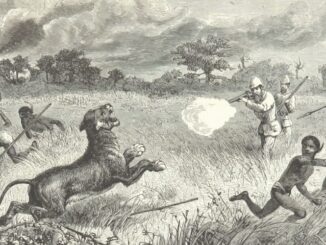
Central America is mostly mountainous,with the large Sierra Madre range dominating the landscapes of Guatemala, El Salvador, and Honduras. Farther south, smaller ranges, including the Cordillera de Talamanca and the Serrania de Tabasara, rise in Costa Rica and Panama. On the western coast of Central America, these picturesque mountains blanketed in lush greenery are part of the dangerous Anillo de Fuego (Ring of Fire) that circles the Pacific Ocean. The region is dotted with active volcanoes, and earthquakes strike frequently. Within Central America’s mountains and jungles lie the ruins of the great Mayan Empire, established close to three thousand years ago.
This remarkable civilization enjoyed its greatest glory between about A. D. 250 and 900. Mayan leaders, scientists, priests, and artists developed advanced systems of government, religion, and society. Although the culture mysteriously crumbled in about 900, its legacy lives on in the form of magnificent pyramids, ancient writings, and the customs and stories passed down among the modern Maya. After the Mayan Empire declined, a new empire sent its forces to the region. In the late 1400s and early 1500s, conquistadors (conquerors) arrived from Spain, exploring and colonizing the Americas.
The Caribbean islands, South America, and Mexico were conquered first. Hungry for still greater treasures of gold, silver, and other precious goods, the conquistadors soon turned their attention to Central America. Descendants of the Maya and other native peoples resisted conquest by the advancing Spaniards. However, local populations were often divided into many separate subgroups, and these individual forces could not match the Spanish in numbers or weaponry. Further weakened by new diseases brought from Europe,thousands of Maya and other native peoples were killed as Spain’s armies swept across the isthmus. Throughout Central America, Spanish colonists forced the native people into backbreaking labor on large farms called plantations.
Growing valuable crops such as cotton and cacao (used for making chocolate),these farms yielded great wealth for the Spanish settlers. Meanwhile, the local population grew poorer and weaker. In the 1700s, growing demand for labor on the plantations led to the beginning of the trans-Atlantic slave trade in the Americas. Thousands of Africans were forced onto crowded ships and brought across the ocean,facing hardship and misery in their new homes. Although relatively few slaves came to Central America compared to its neighbors of North and South America, some slaves did arrive there. They mingled with the local population, as did immigrants from the Caribbean islands to the northeast,bringing new cultural and culinary influences to the region.
Unless otherwise stated, PONIREVO and/or its licensors DO NOT own any intellectual property rights in the website and material on the website. Majority of the site’s content has been scraped and auto posted by a third party artificial intelligence program —– PONIREVO Creation Team.
Proudly WWW.PONIREVO.COM



